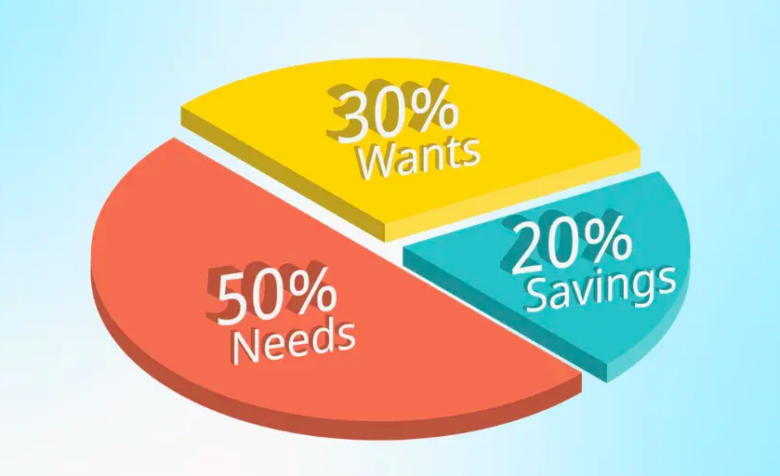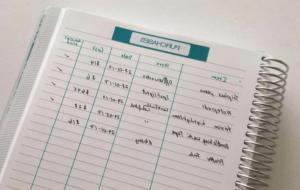Struggling to manage your finances? You’re not alone, at least. It is easy to lose track of how your money is leaving your wallet with bills, groceries, and unexpected expenses. The 50 30 20 rule of money management is an easy budgeting method that simplifies financial planning. If you truly learn this rule and implement it into your life, it will become a life changer for you and your family. It will not be easy to implement, in the beginning it will be very hard because a sudden change will feel weird. Don’t do this just for yourself, do it for your family. Today’s pain will be tomorrow’s reward.
This rule could be the game-changer you’re looking for, whether you want to pay off debt, save for a vacation, or just stop living paycheck to paycheck.
Let’s take a closer look at how it works, why it works, and how to apply it to your lifestyle.
What Does the 50/30/20 Rule Mean for Money Management?
A budgeting model called the 50 30 20 rule was established to help individuals split their after-tax income into three separate segments:
- 50% for needs: necessary, essential expenses.
- 30% for Wants: Lifestyle choices that are not essential.
- Saving 20% for debt or savings: creating financial security.
In her book All Your Worth, Harvard Law School Graduate and Senator Elizabeth Warren made this method mainstream, which focuses on balance rather than restrictive penny-pinching. The 50 30 20 rule is ideal for both beginners and experts of budgeting because it takes less effort than the complex budgeting apps or spreadsheets.
Breaking Down the 50/30/20 Budget Categories
Let us break down each category further to determine what is a “need,” “want,” or “savings/debt repayment.”
- 50% for Needs
These are costs necessary for basic living and survival. The 50% for needs includes:
- rent or mortgage payments
- Utilities (electricity, water, internet)
- Groceries
- Health insurance and medical bills
- Minimum debt payments (e.g., car loans)
If your expenses exceed 50% of your income, you will have to reduce or apply cost-cutting techniques such as negotiating on bills or plan for meals to cut the cost.
- 30% for Wants
30% of wants in 50 30 20 rule consist of non-essential spending that enhances your standard of living but aren’t crucial for survival. These might include:
- Dining out in expensive hotels and restaurants
- Streaming subscriptions such as Netflix
- Travel
- Hobbies
- Luxury purchases
The most important thing over here is enjoyment—if you can live without it, it’s a “want.” By mindfully managing your wants, you can enjoy life’s pleasures while maintaining good financial health at the same time.
- 20% for Savings and Debt Repayment
20% of one’s income is purported to be paid towards savings and debt as per the 50/30/20 rule. This percentage plays an important role in securing the future and having a safety net for unexpected events. Prioritization of the 20% can be made in the form of:
- Retirement savings
- Savings for the emergency fund
- Additional debt payments and investments.
If debt-free, the 20% can be entirely devoted to savings or wealth-building activities. Savings have an important role for long-term goals. Consistency is the key to effective saving, as small amounts can total a massive amount of money over time.
How to Implement the 50/30/20 Rule?
With that being said, you get complete idea about 50 30 20 rule. Here’s how you can start implementing it with a real-time example.
Step 1: Calculate Your After-Tax Income
Start by evaluating your monthly home-take income. If you’re salaried employee, check your pay stub. If you are a freelancer or provide any other service that falls into freelancing criteria, average your last 3–6 months of income.
Step 2: Split Your Income into 50/30/20 Percentages
For instance, keeping all the scenarios as mentioned above, you earn an income of 4000$ after tax. Split it into 50/30/20 Percentages. That will be:
- $2,000for needs
- $1,200for wants
- $800for savings/debt
Step 3: Categorize Your Expenses
After splitting your income, now categorize your expenses. Carefully review your pay slips or bank statements, and mark all the important or cut-down expenses.
Prioritize them, make them in ascending or descending order, and group all related expenses so that you can carefully monitor them. There are several apps that will help you to perform this task.
Step 4: Adjust as Needed
Last but not the least, adjust allocations if your income or expenses change. For instance, a pay raise could mean boosting savings more than 20%. It all depends upon your priorities. But it will be a wiser option to increase your savings instead of spending it on “wants” or “needs” the 30/20.
Why the 50 30 20 Rule Works – The Key Benefits:
- Simplicity: No complicated calculations. Just simple three categories that can save a lot.
- Flexibility: Adapts to different incomes and lifestyles.
- Balance Lifestyle: Prevents overspending while allowing you to take full charge of life.
- Builds Financial Habits: Encourages consistent saving and mindful spending.
Potential Drawbacks and Issues of 50/30/20 Rule:
In big cities, the cost of living is high. It eventually increases the “need” portion of 50/30/20 rule. You can counter this by temporarily reducing “wants” or by increasing your overall income.
The second issue with the model is Variable Income! Most people do not have stable income. Their income varies especially if they don’t have a permanent job or if they are engaged in some freelancing projects. For such people, it is ideal to set the rule with their minimum earning per month.
The last and final drawback of this model is aggressive debt. If you are tackling high debt, then 20% rule might not work. Consider allocating it more than 20% in order to tackle it.
Final Verdicts: Is the 50/30/20 Rule Right for You?
The 50/30/20 rule for managing money might not fit for all sizes or provide solution to everyone, but its simplicity makes it a fantastic starting point. If traditional techniques for budget maintenance feel inadequate, this method definitely offers a breathing room while keeping your budget and finances on track.
Test it for at least 3 months, adjust the percentages, track your progress, and watch your financial health grow.
Just keep in mind, the goal here is not perfection; it’s all about progress. Start today, and take charge of your money, one percentage at a time.




